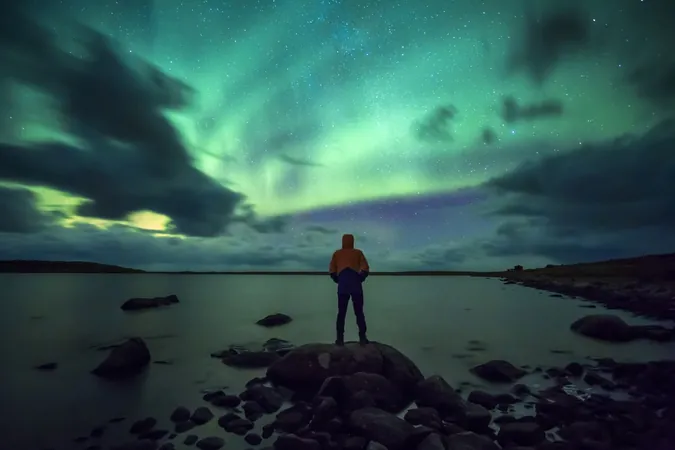
Northern Lights Alert: Can You See Auroras Tonight?
2024-11-19
Author: Jia
Auroras, often described as nature's most captivating light show, dazzle onlookers with their stunning colors dancing across the night sky. However, catching a glimpse of this mesmerizing phenomenon requires you to be in the right place at the right time.
As we delve into tonight’s aurora forecast, we’ll provide essential information about upcoming geomagnetic activity and the likelihood of seeing the northern lights based on your location. We’ll also keep you updated on significant space weather events like coronal mass ejections (CMEs) and coronal holes that could usher in the solar winds essential for aurora displays.
Key Factors in Aurora Visibility
One crucial metric to pay attention to is the Kp index—this scales solar storm intensity, with higher values indicating stronger aurora activity. Likewise, the Bz value of the Interplanetary Magnetic Field plays a key role. When observing data from platforms like SpaceWeatherLive.com, aim for a strong “south” Bz. This orientation allows the solar particles to interact more effectively with Earth's magnetic field, heightening your chances of witnessing an aurora.
What’s Happening Tonight?
On **Tuesday, November 19**, a lower Kp index is forecasted with a maximum predicted value of around 2 for tonight between 4:00 - 7:00 PM EST (2100-0000 GMT), according to the NOAA's Space Weather Prediction Center. While this suggests a less robust potential for auroras, high latitude regions above the Arctic Circle still stand a chance of experiencing auroras due to ongoing solar activity.
A significant coronal hole directed towards Earth could heighten geomagnetic activity in the coming days, and with the sun entering a phase of increased solar flares—nine M-class flares erupted just yesterday—we may be on the verge of exciting auroral displays. For context, solar flares occur when the sun releases bursts of energy, and those from sunspot group AR3901 could lead to the kind of spectacular auroras that leave viewers in awe if a coronal mass ejection accompanies it.
Future Predictions
As we look beyond tonight, solar flare predictions remain promising. Current estimates suggest a 55% chance for M-class solar flares and a 10% chance for X-class flares today, which could further impact aurora viewing conditions. When X-class flares occur, they are known to be quite powerful and can significantly enhance auroral visibility.
Keep your eyes peeled over the coming nights as geomagnetic conditions evolve, and don’t miss out on the incredible experience of witnessing the northern lights. With excellent viewing spots scattered across the Arctic regions—from Norway’s breathtaking coastlines to Sweden's Abisko National Park—the magical allure of the auroras beckons.
Remember, even when conditions seem less favorable, nature can surprise us. So, whether you're an aurora-chasing enthusiast or a curious first-timer, tonight might just reward you with a spectacular view!

 Brasil (PT)
Brasil (PT)
 Canada (EN)
Canada (EN)
 Chile (ES)
Chile (ES)
 España (ES)
España (ES)
 France (FR)
France (FR)
 Hong Kong (EN)
Hong Kong (EN)
 Italia (IT)
Italia (IT)
 日本 (JA)
日本 (JA)
 Magyarország (HU)
Magyarország (HU)
 Norge (NO)
Norge (NO)
 Polska (PL)
Polska (PL)
 Schweiz (DE)
Schweiz (DE)
 Singapore (EN)
Singapore (EN)
 Sverige (SV)
Sverige (SV)
 Suomi (FI)
Suomi (FI)
 Türkiye (TR)
Türkiye (TR)